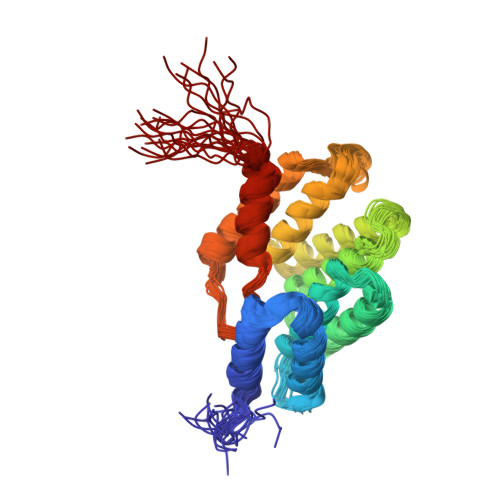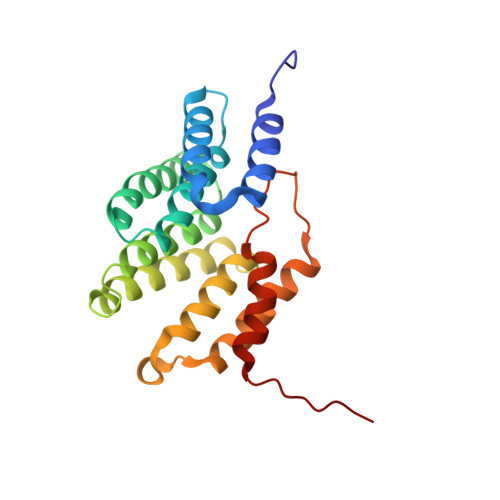Structural properties of a haemophore facilitate targeted elimination of the pathogen Porphyromonas gingivalis.
Gao, J.L., Kwan, A.H., Yammine, A., Zhou, X., Trewhella, J., Hugrass, B.M., Collins, D.A.T., Horne, J., Ye, P., Harty, D., Nguyen, K.A., Gell, D.A., Hunter, N.(2018) Nat Commun 9: 4097-4097
- PubMed: 30291238
- DOI: https://doi.org/10.1038/s41467-018-06470-0
- Primary Citation of Related Structures:
6BQS, 6CRL - PubMed Abstract:
Porphyromonas gingivalis is a keystone bacterial pathogen of chronic periodontitis. P. gingivalis is unable to synthesise the porphyrin macrocycle and relies on exogenous porphyrin, including haem or haem biosynthesis intermediates from host sources. We show that under the iron-limited conditions prevailing in tissue environments, P. gingivalis expresses a haemophore-like protein, HusA, to mediate the uptake of essential porphyrin and support pathogen survival within epithelial cells. The structure of HusA, together with titration studies, mutagenesis and in silico docking, show that haem binds in a hydrophobic groove on the α-helical structure without the typical iron coordination seen in other haemophores. This mode of interaction allows HusA to bind to a variety of abiotic and metal-free porphyrins with higher affinities than to haem. We exploit this unusual porphyrin-binding activity of HusA to target a prototypic deuteroporphyrin-metronidazole conjugate with restricted antimicrobial specificity in a Trojan horse strategy that effectively kills intracellular P. gingivalis.
Organizational Affiliation:
School of Dentistry, Faculty of Medicine and Health, The University of Sydney, Camperdown, NSW, 2145, Australia. jinlong.gao@sydney.edu.au.


















